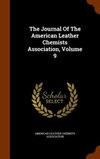基于还原氧化石墨烯在铬鞣中原位形成的高性能皮革
IF 0.5
4区 工程技术
Q4 CHEMISTRY, APPLIED
Journal of The American Leather Chemists Association
Pub Date : 2022-04-29
DOI:10.34314/jalca.v117i5.4917
引用次数: 1
摘要
提出了一种利用氧化石墨烯原位还原法制备高性能皮革的新方法。首先,采用改进的Hummers法制备纳米氧化石墨烯(GO)。然后,利用傅里叶变换红外光谱(FT-IR)、x射线衍射(XRD)、扫描电镜(SEM)和x射线光电子能谱(XPS)对制备的氧化石墨烯进行表征。最后,在铬鞣过程中加入氧化石墨烯,铬鞣完成后氧化石墨烯被抗坏血酸还原。研究了成品皮革的收缩温度、拉伸强度、撕裂强度和导热系数。结果表明,氧化石墨烯的加入显著提高了铬鞣剂的吸收率。所得皮革的抗拉强度、撕裂强度和导热系数明显优于铬鞣剂鞣制的皮革。其中,当还原剂用量为氧化石墨烯用量的10倍时,皮革的拉伸强度和撕裂强度分别达到21.25 MPa和163.95 N·mm-1。皮革鞣制与氧化石墨烯原位还原相结合有望成为制备高性能皮革的一种新的加工方法。本文章由计算机程序翻译,如有差异,请以英文原文为准。
High Performance Leather based on in Situ Formation of Reduced Graphene Oxide in Chrome Tanning
A novel method of high performance leather prepared via in situ reduction of graphene oxide after tanning was proposed in this research. First, nano-graphene oxide (GO) was prepared by an improved Hummers method. Then, the prepared GO was characterized by Fourier transform infrared spectroscopy (FT-IR), X-ray diffraction (XRD), scanning electron microscopy (SEM), and X-ray photoelectron spectroscopy (XPS). Finally, GO was added during the chrome tanning process, and GO was reduced by ascorbic acid after the chrome tanning was completed. Moreover, the shrinkage temperature, tensile strength, tear strength and thermal conductivity of the finished leather were investigated. The results showed that the absorption of chrome tanning agent was significantly improved by the addition of GO. The tensile strength, tear strength, and the thermal conductivity of the resulted leather obviously surpassed the leather tanned by chrome tanning agent. Specifically, the tensile strength and tear strength of the leather reached 21.25 MPa and 163.95 N·mm-1 , respectively, when the amount of reducing agent was ten times the amount of GO. A combination of the tanning of leather and the in situ reduction of GO is expected to become a new processing method for preparation of high performance.
求助全文
通过发布文献求助,成功后即可免费获取论文全文。
去求助
来源期刊

Journal of The American Leather Chemists Association
工程技术-材料科学:纺织
CiteScore
1.30
自引率
33.30%
发文量
29
审稿时长
3 months
期刊介绍:
The Journal of the American Leather Chemists Association publishes manuscripts on all aspects of leather science, engineering, technology, and economics, and will consider related subjects that address concerns of the industry. Examples: hide/skin quality or utilization, leather production methods/equipment, tanning materials/leather chemicals, new and improved leathers, collagen studies, leather by-products, impacts of changes in leather products industries, process efficiency, sustainability, regulatory, safety, environmental, tannery waste management and industry economics.
 求助内容:
求助内容: 应助结果提醒方式:
应助结果提醒方式:


